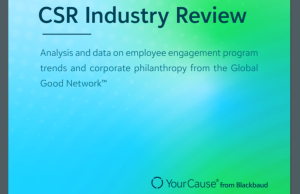More than two out of five nonprofits (42%) in a recent survey expect staff turnover to increase from 2020 to 2021, yet the vast majority of organizations do not have a talent retention strategy.
The findings are part of the 2021 Nonprofit Talent Retention Practices Survey, a 20-page report from Washington, D.C.-based NonprofitHR. While 28% of executives expect turnover to remain the same and 14% said they were unable to predict it, 16% said they expect turnover to decrease. Only 13% of respondents said they have a talent retention strategy, and four out of five said they do not have one.
Three out of five respondents (60%) said they track retention metrics compared with only 19% that do not; and 21% said they do not know.
Almost half of respondents reported retaining employees younger than 30 is their biggest challenge. Likewise, 45% of respondents said entry-level staff presented the most challenge to retain.
Similarly, 29% found the most challenging age segment to retain was those 31 to 49 years old and 35% cited mid-level staff as the biggest challenge to retention. Almost one in five respondents said they had no challenge retaining employees in any age segments and 15% said their organization is not challenged retaining employees in any of the experience segments.
While 44% of nonprofit executives said they were not challenged retaining any specific gender staff segments, 30% cited women as the most challenging to retain while 14% said men.
Breaking down retention challenges by department, program staff clearly was the most difficult, with 34% of organizations reporting it being the most challenging to retain. At the same time, 18% of organizations reported they are not challenged retaining employees in any specific staff segments by department, with a smattering across departments elsewhere:
- 10%, operations/administration/facilities
- 6%, education/professional development
- 6%, fundraising
- 4%, marketing, communications, public affairs
- 3%, finance
- 2%, human resources
- 2%, IT/tech
- 2%, membership/member relations
- 1%, event/meeting planning
The most common reasons behind voluntary turnover at responding organizations was a better opportunity presented (49%) and career growth or a lack of opportunity for upward mobility (44%). More than a third (35%) cited dissatisfaction or disengagement with the current organization or culture, followed closely by compensation and benefits (32%). About one in five (20%) said it was a family situation and a similar portion (19%) cited a career change.
Retention strategies most employed by respondent organizations:
- 80%, benefits
- 76%, compensation
- 72%, learning/professional development
- 67%, culture
- 57%, engagement
The most common qualitative retention tactics used by responding organizations were exit interviews (72%), followed by effective onboarding (61%) and recognition programs (54%). Other options were far less popular, including engagement surveys (43%), and culture or climate surveys (39%). Tactics that were cited by about one-quarter of respondents included stay interviews (28%), long-service bonuses (26%) and retention bonuses (25%).
The more than 500 respondents to the survey represented organizations from 38 states and Canada, with budgets ranging from $5 million to more than $500 million. About 60% of respondents reported revenue of less than $10 million and another 30% between $10 million and $50 million. A similar proportion identified as being in the maturity/sustainability stage of their life cycle (62%) or the growth stage (32%).









